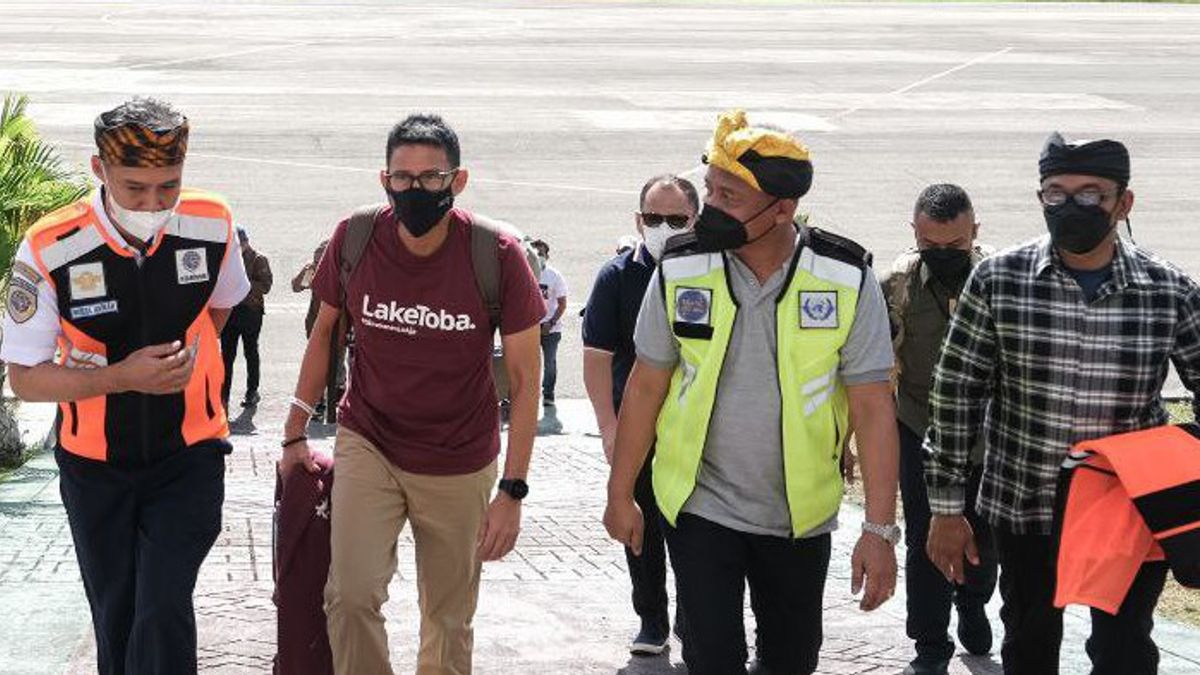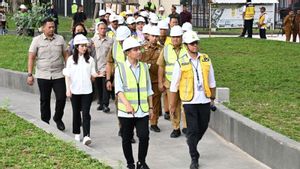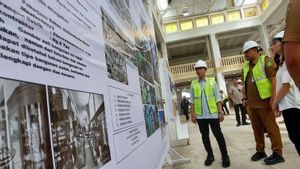JAKARTA - Minister of Tourism and Creative Economy Sandiaga Salahuddin Uno advised all Buton villagers to maintain the sustainability and sustainability of the Limbo Wolio Tourism Village located in Baubau City, Southeast Sulawesi (Sultra).
Menparekraf Sandiaga said the Limbo Wolio Tourism Village, located on a hilltop in Baubau City, has the largest fort in the world with an area of 23.3 hectares and has been recorded in the Indonesian World Record Museum (MURI) and the Guinness Book of World Records in 2006.
"The Limbo Wolio Tourism Village is the location of the largest fort in the world. We have to protect it, we have to preserve it. And indeed to protect it involves the community, the government, and all elements of the pentahelix," said Minister of Tourism and Creative Economy Sandiaga in his statement, Thursday, June 9.
Wolio Fort was originally built by the King of Buton III named La Sangaji who had the title Kaimuddin in the 16th century. The fort was only built in the form of piles of karst stones arranged around the palace complex to create a guardrail between the palace complex and community settlements as well as a fortress.
However, during the reign of King Buton IV, La Elangi or Dayanu Ikhsanuddin, the fort in the form of a pile of stones was used as a permanent building. It is said that the rocks were glued together with a mixture of egg white, sand, and lime.
During the heyday of the Sultanate of Buton, the existence of Fort Wolio had a major influence on the existence of the kingdom. In a period of more than four centuries, the Sultanate of Buton was able to survive and avoid enemy threats.
Wolio Fort itself has 12 gates called 'Lawa' and 16 cannon emplacements which they call 'Badili', 4 boka-boka (round bastions), batu tondo (circular walls), moats, and weapons. Because it is located at the top of a hill that is quite high with a fairly steep slope, this place is the best defense in its time.
"However, the quality of the stones in Wolio Fort will slowly erode, there must be conservation, because what must be considered is the sustainability aspect, how this Limbo Wolio tourism icon will become a legacy for our children and grandchildren, for hundreds of years into the future, so it must be done. We'll take care of it," said Minister of Tourism and Creative Economy, Sandiaga.
One of the most respected sultans of his time was the Sultan of Buton VI, Lakilaponto or known as Sultan Murhum Qaimuddin Khalifatul Khamis. He became the first sultan and the last king, because the system of government that was originally a kingdom was changed to a sultanate. As king he ruled for 20 years, while as sultan for 26 years.
Islam began to enter Baubau City during his reign. During his reign, he founded a mosque which was named Masigi Ogena or the Great Mosque of the Sultanate of Buton. Until now the mosque is still functioned as a place of worship for Muslims.
According to the Head of Pokdarwis Dadi Mangora, the Molagina Maman Palace inside the Great Mosque of the Sultanate of Buton, it is full of meaning. Call it the number of steps there are as many as 17, indicating the number of rak'ahs of prayer. Then the length of the drum is 99 cm, symbolizing Asmaul Husna and the stakes are 33 according to the number of prayer beads.
The tomb of Sultan Muhrum is also in the Wolio Fort area. The tomb was built to pay homage to the services of the Sultan during his lifetime. This tomb is often used by the community as a pilgrimage tour or what is called 'Santiago'.
Menparekraf Sandiaga who was accompanied by the Special Staff of the Menparekraf for Accountability, Supervision, Reform and Bureaucracy at the Ministry of Tourism and Creative Economy, Inspector General Pol Krisnandi; Director of Destination Governance Kemenparekraf/Baparekraf, Indra Ni Tua; and the Mayor of Baubau, La Ode Ahmad Monianse had the opportunity to visit the tomb of Sultan Muhrum.
Near the tomb of Sultan Muhrum there is the Yi Gandangi Stone. According to local people, it is not legal to go to Baubau City if you have not touched the stone. In the past, where this stone was located, there was a spring in the rock gap which was believed to be able to release water when there was a coronation of a king or sultan.
In addition to Wolio Fort which is a cultural heritage of the archipelago, there are various elements of interesting tourist attractions. Among them are Kande-Kandea, Posipo, Alana Bulua, Dole-Dole, Tandaki, Haroa, Qadiri, Qunua, Tembaana Bula, as well as various traditional games. However, these attractions can only be enjoyed at certain times, depending on the traditions of the Butonese community as well as on any other cultural event in Baubau City.
With the potential for such a large tourism village, Menparekraf Sandiaga hopes that the welfare of the community can increase by opening up business opportunities and employment opportunities through sustainable village development.
"This is an achievement but it must be maintained, it must be maintained and it must be able to prosper the community," said the Menparekraf.
The Mayor of Baubau, La Ode Ahmad Monianse expressed his gratitude to the Minister of Tourism and Creative Economy for being willing to attend to provide encouragement and motivation to the Butonese community in developing quality and sustainable tourism.
"Hopefully, with tourism, Indonesia can rise after the pandemic period and we will regain Baubau City as an advanced, just and prosperous city," he said.
The English, Chinese, Japanese, Arabic, and French versions are automatically generated by the AI. So there may still be inaccuracies in translating, please always see Indonesian as our main language. (system supported by DigitalSiber.id)








